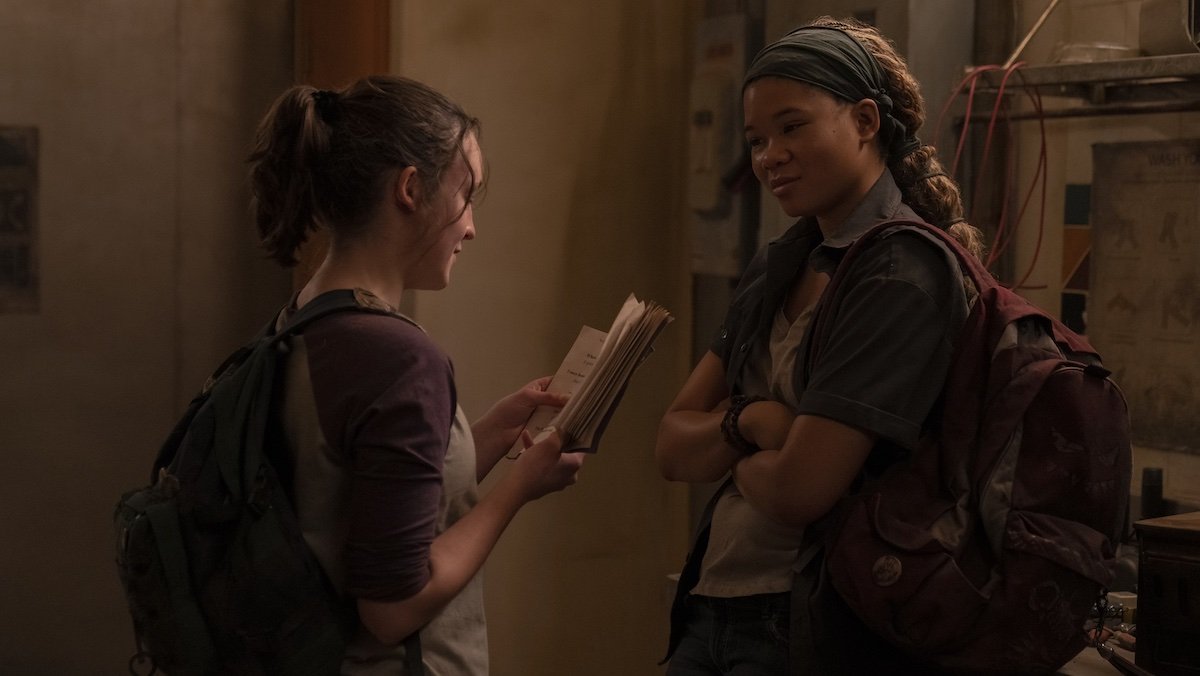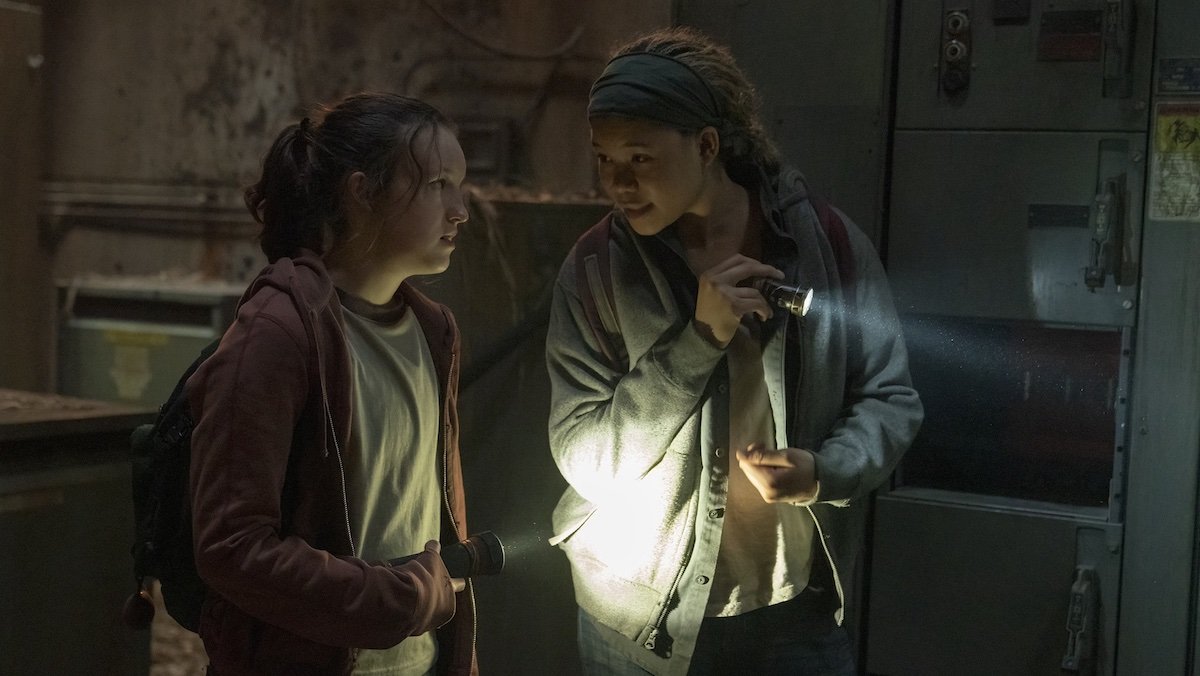HBO’s new hit series, The Last of Us, continues to enthrall viewers with its emotional exploration of a post-apocalyptic world. Thus far, The Last of Us uses fantastical elements to radically reimagine a better world, even as its characters’ lives crumble around them. Interestingly, the series shows this better avenue through its treatment of chronic illness, whether it’s the real-world sicknesses that also exist in The Last of Us, or the fungal infections that serve as the catalyst for the show. By exploring the emotional, physical, and social realities of chronic illness, The Last of Us is refreshing in its conclusiveness about one basic truth. Eventually, our bodies break down, but that doesn’t mean our stories end.

In the show’s seventh episode, “Left Behind,” Ellie (Bella Ramsey) and her crush, Riley (Storm Reid), meander around an abandoned mall together. After Ellie finally kisses Riley, one of the Infected bites both of them. Ellie rampages in anger over their dire situation while Riley stays calm. Riley states that they have two options. They can shoot themselves so they can’t turn into the Infected. Or they fight the infection for as long as they can, together. “It ends this way sooner or later, right?” Riley says, “Some of us just get there faster than others. But we don’t quit, whether it’s two minutes, or two days, we don’t give that up.”
This fate for Ellie and Riley continues the show’s exploration of queer relationships and illness. For the two girls, their infection is an impetus to stay together, rather than separate themselves. In many ways, this recalls the relationship between Bill (Nick Offerman) and Frank (Murray Bartlett) in episode 3 (“Long, Long Time”). Bill and Frank, miraculously, avoid infection; however, Frank eventually falls terminally ill with a condition that was incurable even before apocalypse. Bill tenderly cares for Frank until the latter decides one day that he is ready to die. Surprisingly, Bill also takes a lethal dose of medication because he doesn’t want to continue living without his “life’s purpose”—Frank.
It’s often said that horror is uniquely suited for discussing societal taboos that are “too jarring” in other genres. This is certainly the case for The Last of Us. The Infected represent some of the taboos that American, capitalist society is afraid to confront: illness and aging. Eventually, most of the Infected in The Last of Us explode into a fungus blossom after a period of time. Like humans, they also age and break down. So in effect, the characters’ fight to survive against the Infected isn’t so much a literal “man vs. zombie” situation. It is more a reckoning with what our eventual fate will be.

Because illness often comes with age, we try make ourselves look younger for as long as we can. We are so fearful of falling ill and permanently changing that we pretend that it only happens to other people. As the characters’ reactions to the Infected show, the most horrifying part about falling ill or growing old isn’t the disease or age itself. Rather, it’s the isolation and abandonment that we associate with them. We fear the social death that precedes our final, physical death.
And this is precisely why The Last of Us is so radical in its handling of Ellie and Riley’s infections, alongside Bill and Frank’s battle with chronic illness. When queer characters fall sick, however unfairly, they’re not alone. This is a major break from most mainstream narratives of chronic illness. It usually focuses on the healthy partner’s “bravery” for choosing to love someone who is going to die. But the truth of the matter is, as Riley says, we are all going to die. Death just comes earlier for some of us. By having characters united in this truth, The Last of Us exposes the hypocrisy in our culture’s view of chronic illness and disability.
As a chronically ill queer person, I am deeply moved by how The Last of Us finds beauty in its most tragic moments. Despite being set unequivocally in a world of horrors, this show envisions a radical, queer space that is free of our culture’s most toxic attitudes towards illness, disability, and dying. It hurt to watch two young lesbians grapple with the unfairness of their own mortality; however, the show remains deeply committed in its refusal to concede to our expectations. The apocalypse in The Last of Us didn’t make people like Riley and Ellie more eager to abandon each other in the face of the inevitable.

I am not on Riley and Ellie’s “two minutes or two days” timeline. But I do fear that one day, I won’t be able to get out of bed. My illness put a strain on my previous relationship. So, I’d be lying if I said I wasn’t afraid of going through my next stages alone. I know the richness of life will continue to exist regardless of how bad my health gets; however, these latent fears are more difficult to shake off than I would like to admit.
But there’s Ellie, who, like me, is just as much baffled by her own survival as she is scared of what she might become. In episode five (“Endure and Survive”), she admits to Sam (Keivonn Montreal Woodard) that she is afraid of “ending up alone.” And yet, in this episode, she races to patch up a wounded Joel (Pedro Pascal) instead of heeding his advice to leave him to die. For me, she represents how being chronically ill opens up a world of defiant possibilities. Getting hurt never needs to equate to death. Our survival hinges upon our ability to care for each other before the inevitable. And even though I can’t see what’s hurting me, I choose to keep going, like Riley and Ellie did.
Bill and Frank celebrated aging because “older means we’re still here.” I have taken this idea to heart, for whatever lies ahead for me.